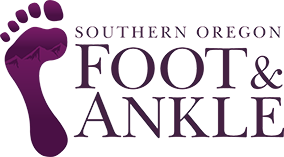If you’re anything like Dr. Merrill, then you’re hitting the roads and trails a few times a week for a run. The excitement and exhilaration of the fresh air on your face, in your lungs, and blowing through your hair is enough to make athletes fall in love with running.
The problem is that running can take a toll on your body. Over time, the pounding of the pavement can turn from joyous to painful if you’re not careful.
Common Sports Injuries
There’s nothing worse for an athlete than being taken from the activity you love because of an injury. Fortunately, being aware of the most common injuries runners face will provide a better chance of preventing them—or at least reducing the damage they cause.
Here’s what to watch out for:
- Achilles tendonitis. If you overtrain or break into running too quickly, you’re more likely to develop Achilles tendonitis. Be careful if you notice that the back of your heel and ankle is hard to move, painful, or stiff.
- Stress fractures. Stress fractures are painful yet quiet injuries that develop more slowly over the surface of a bone. Unlike bone fractures from trauma, you won’t know the exact moment they happen.
- Ankle sprains. Rolling an ankle on a rock or curb is common. If your ankle becomes swollen, bruised, or sore, you should rest, ice your ankle, and elevate it to help it heal.
- Ankle problems. Sprains are just one kind of running-related ankle condition. Arthritis, tendon and ligament dysfunction, a lesion in the joint (osteochondritis), and tendinitis can all cause pain and instability in the ankle. In most cases, orthotics and braces can be sufficient to stabilize the ankle, but severe cases may require surgery.
- Blisters. Blisters occur from poorly fitted shoes and too much friction. If you start to develop blisters, change your shoes. You should also wear a protective bandage to prevent your blister from worsening, which could cause an infection.
- Heel pain. Runners experience heel pain for a variety of reasons. Some injuries are due to overuse, while others are caused by irregular gait or foot development—and still more are caused by wearing running shoes that don’t fit properly.
- Plantar fasciitis. This is inflammation along the bottom of your foot, often resulting in pain first thing in the morning or when standing up after a long period of inactivity.
- Shin splints. Medically known as “tibial stress syndrome,” this is a fairly common condition. Pain is the primary symptom, and it typically develops along the tibia—the larger of the two lower leg bones.
- Turf toe. If your big toe flexes beyond its limit, the connective tissues become inflamed in a sprain commonly known as turf toe. If the swelling, bruising, and pain are severe, you may need to use a walking boot and undergo physical therapy to strengthen the big toe.
Get Help From a Fellow Runner
When you’ve been injured on the road, talk to someone who knows what it’s like to be a runner.
Dr. Evan Merrill is not just a podiatrist; he’s also an athlete. He understands the torment you feel when you have to rest from a sports injury. That’s why he encourages you to catch these injuries before they happen so that your rest time is as short as possible.
Contact us today by filling out our online form or call us at (541) 776-3338 to start feeling better—and if you see Dr. Merrill out at an event, such as the Pear Blossom Run or any other race, be sure to say hi!
